The Black Tusk 1932
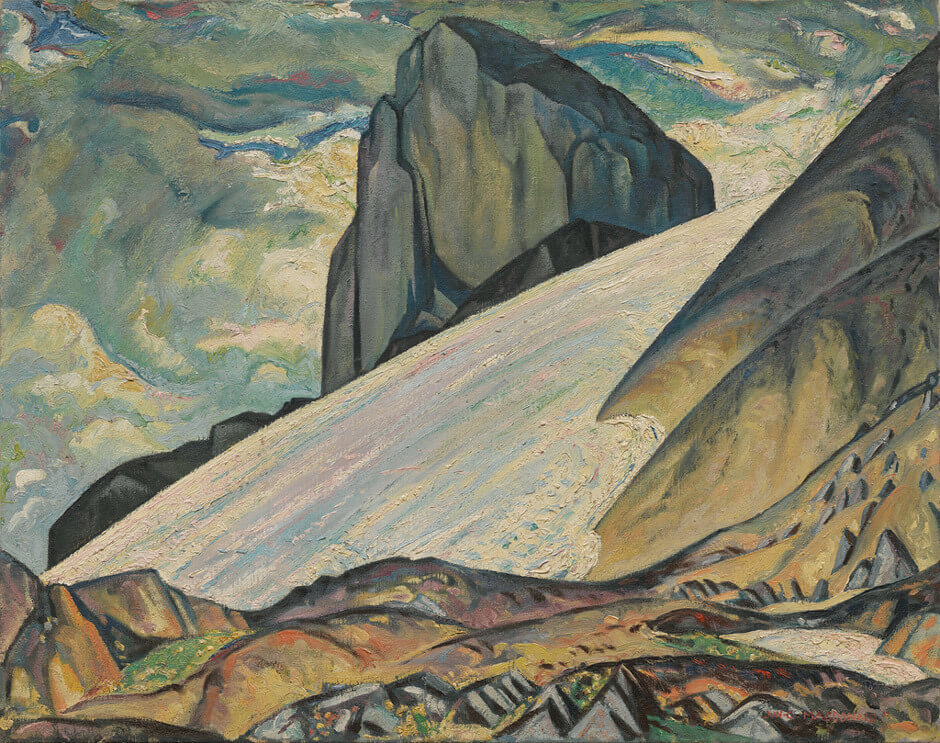
Jock Macdonald, The Black Tusk, Garibaldi Park, B.C., 1932
Oil on canvas, 71 x 90.8 cm
Vancouver Art Gallery
This dramatic painting confirmed Macdonald’s reputation as a painter of the Canadian landscape. Macdonald often joined Fred Varley (1881–1969) on painting expeditions into Garibaldi Park, where they attempted to capture the magnificence of the landscape. Macdonald described “that unbelievably beautiful virgin country still unknown to tourists, where … the lakes are pure emerald, the glaciers are fractured with rose-madder, turquoise-blue and indigo crevasses, and the mountains are black, ochre and Egyptian Red.”
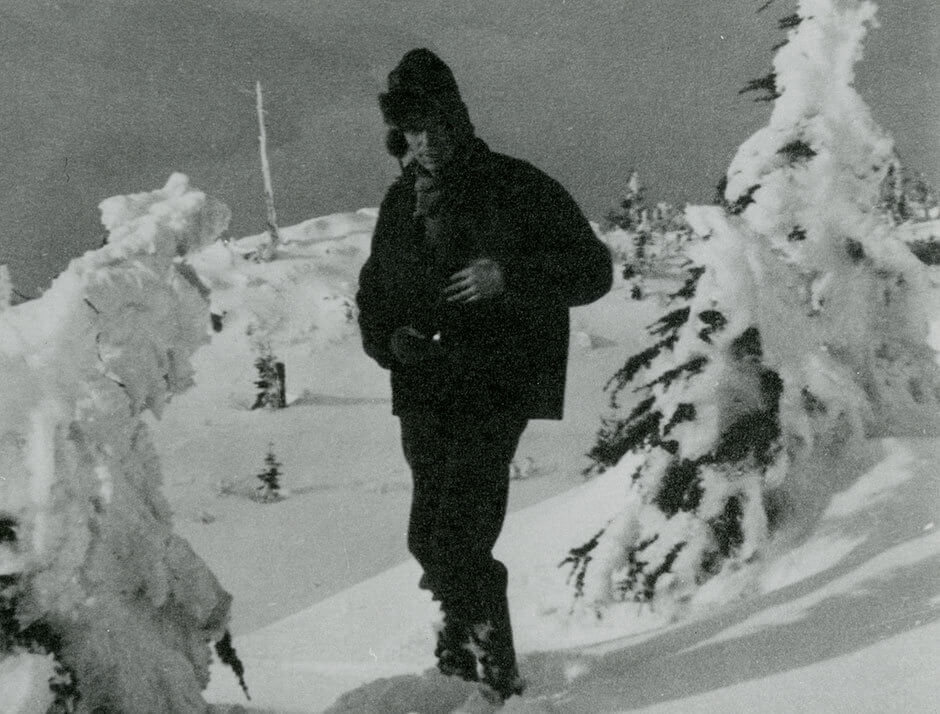
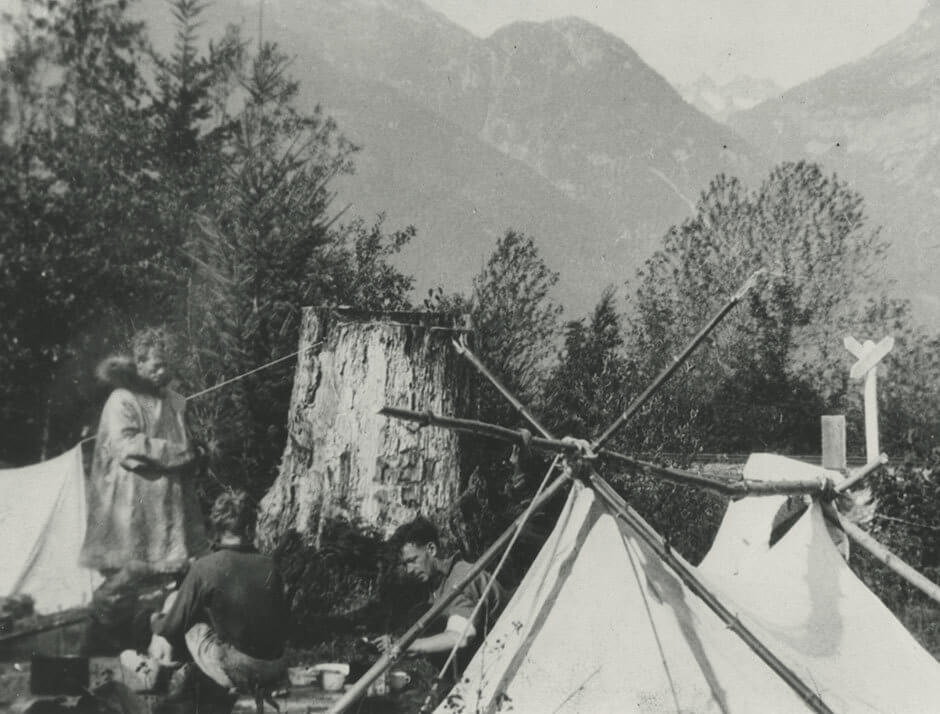
The dark tusk, silhouetted against an arresting cloudscape, is contrasted with the sweeping snowy slope and the diagonal blue-grey glacier. Macdonald’s largest canvas to that time, the painting portrays a majestic landscape. Although the repetition of the small Art Deco–inspired triangular elements in the immediate foreground—a carry-over from his design background—seem somewhat inappropriate in a work that aspires to monumentality, the painting is ultimately successful in symbolizing the rugged grandeur of British Columbia.
Immediately well received, The Black Tusk confirmed Macdonald’s reputation as a painter of the Canadian scene. Over the next decade, it was widely exhibited in cities across Canada and abroad. In 1936 it was included in the Exhibition of Contemporary Canadian Painting organized by the National Gallery of Canada, Ottawa, which circulated through the southern dominions of the British Empire, and three years later it was selected as part of the Canadian exhibition at the New York World’s Fair. In 1941 Macdonald included it in his first solo exhibition at the Vancouver Art Gallery.

 About the Author
About the Author
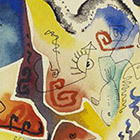 More Online Art Books
More Online Art Books
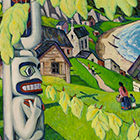 Acknowledgements
Acknowledgements